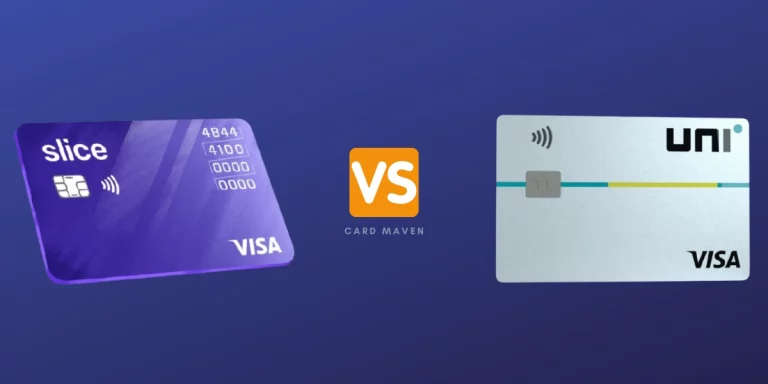Slice cards and Uni pay 1/3rd cards are not the same as regular credit cards. Both the Slice card and the Uni pay 1/3rd card have lower charges and fees than a standard card. Furthermore, you do not need to show your CIBIL score in order to be qualified for the card. As a result, new credit cardholders favour these cards. There are many similarities and important differences between a slice card and UNI cards. In this article, we will discuss the differences between the cards.
It is a card that allows you to buy now and pay later. With this card, you can pay your monthly card fees in three instalments over three months at no additional cost. In times of financial difficulty, the card can be useful. Uniorbit Technologies (UNI) introduced the card in partnership with RBL Bank, State Bank of Mauritius, and Liquiloans.
The Slice credit card, on the other hand, was introduced by the slice. The holder of this card can pay the monthly amount in three months with no extra charges and six and twelve months with charges. The card contains cashback offers, which we shall go over in the following section.
Features and Benefits of UNI Card & Slice Credit Card
Features and benefits of UNI Card
No annual or joining fees
The UNI pays one-third credit card charges with no annual or membership fees. As a result, it is a credit card that is free for life.
Spend wherever and whenever you want
You can use the card to pay for everything, including food and necessities, bills and utilities, and fashion sales.
Applicant’s age
Anyone over the age of 21 can apply for a Uni pay 1/3rd card.
Pay in three instalments over three months or Pay in one month to get a cashback
The card is the first of its kind in India, allowing customers to pay their monthly spend in three instalments over three months with no additional fees. If you pay during the free credit term of 30 days, you will be eligible for a cashback incentive.
Acceptance and Data security of UNI card
Uni pay 1/3rd card is accepted by 99.9% of merchants across the country. The card also has data protection, security, and encryption of your data, ensuring that it cannot be counterfeited.
Feature and benefits of the Slice credit card
Anyone above the age of 18 can apply for a slice card.
No credit score required
To apply for a slice card, candidates do not need to have a credit score. As a result, slice cards have become far more widely available than regular cards. Slice perks are additional discounts offered by your card when ordering from companies such as Uber, Zomato, and Amazon.
Acceptance of slice cards
99.95% of merchants around the country accept slice cards. There are no yearly or joining fees associated with the card. It also has no yearly fees. As a result, it is a card that is valid for life.
Cashback with EMI repayment option
Cardholders receive cashback on all transactions. The card offers EMI options for 3, 6, or 12 months. The slice card has a repayment option of 3, 6, or 12 months where there are no fees if the cardholder repays the balance in three months. However, there are certain fees if you pay after three months.
Difference Between the UNI card & Slice Credit Card
Both are very similar, but there are several key differences that will help you decide which card is ideal for you. Those over the age of 18 can apply for a slice card, whilst applicants over the age of 21 can apply for a uni card. Slice cards can provide additional savings when ordering from internet businesses like Zomato and Amazon. The uni card does not have such an offer. However, the charges associated with the uni card are lower than those associated with the slice credit card.
The Slice credit card and the Unipay 1/3rd card are ideal for candidates who are new to credit cards. They don’t have many charges against them. Furthermore, you have the option of repaying in instalments. If you like the qualities of the cards, you can apply for one that meets your needs. However, before you do so, make sure to compare and contrast the cards that offer the same feature in order to make an informed decision.
Read Also: Myths about credit scores Nowadays

